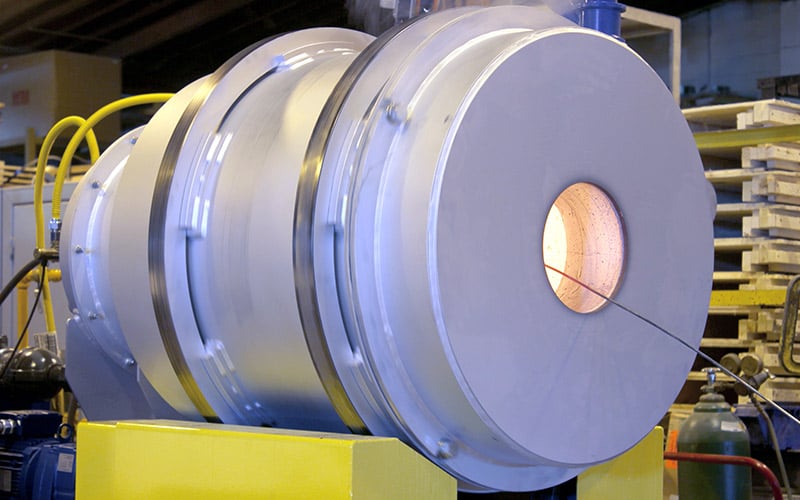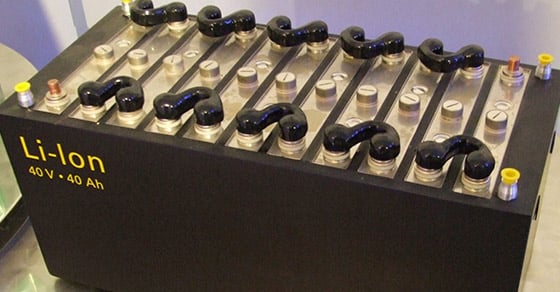The lithium-ion battery market has seen explosive growth in recent years, largely in response to the growing electric vehicle market, coupled with the increasing use of consumer electronics and a desire to advance energy storage technology for renewable energy applications. A Grand View Research report estimates that the lithium-ion battery (LIB) market will see an astounding 17.0% CAGR up to 2025, settling on a USD 93.1 billion market value.
While the use of lithium-ion batteries helps contribute to a more sustainable future, the major growth exhibited by the market also requires an effective and sustainable approach to dealing with end-of-life batteries.
And although some argue that the battery recycling market is being held back less so by technology, and more largely by policy framework that pushes spent batteries overseas (primarily to China), most agree that a technology allowing for a circular lithium-ion battery model is imperative to a sustainable future. As a result, a significant amount of research and development is being conducted around this endeavor.
About Lithium-ion Batteries
Lithium-ion batteries are a key tool in efforts to reach a more sustainable society. In addition to the opportunities they can provide, LIBs are also less toxic than their predecessors (ex., lead-acid batteries).
There are many types of lithium-ion batteries, categorized according to the active materials (AM) employed in the chemistry of the cathode. As a result, the makeup of these high energy density batteries can differ, but in general, contains a variety of increasingly valuable components such as:
Recovering these metals is essential to avoiding the depletion of finite resources, reducing reliance on mining new resources, decreasing environmental risks, and reaching a circular economy.
Additionally, some of these materials – particularly cobalt – are scarce and not yet replaceable. Or, they may pose supply risks or eventual depletion. All of these factors make recycling paramount to securing their continued use. As the industry looks for ways to implement a closed-loop battery life cycle, however, a few challenges stand in the way.
Challenges to Recycling LIBs
While research has increased around the recycling of lithium-ion batteries and many processes are being examined, the industry has generally yet to realize an economic way of fully recycling LIBs.
And although many anticipate a wave of li-ion batteries hitting the market in several years, requiring the technology and infrastructure to accommodate them, the current demand for recycling these spent batteries is low, presenting the first industry challenge.
More troubling is that the industry standard for li-ion battery chemistry has yet to be defined, making the potential process for recycling difficult to predict. It is widely recognized, however, that it will be a complex process in order to recover all of the valuable components, due to the complex makeup of LIBs, which has so far, challenged the economics of recovery.
Approaches to LIB Recycling
Several techniques are being investigated for recycling LIBs, typically all falling under the physical, pyrometallurgical, or hydrometallurgical category. Many studies, however, have been combining pyrometallurgical and hydrometallurgical techniques with optimistic results.
Hydrometallurgy
Hydrometallurgy is an extraction technique that relies on aqueous chemistry to recover metals from various media. Typical techniques within the hydrometallurgy category involve various forms of leaching, solvent extraction, electrolysis, precipitation, and more.
Pyrometallurgy
Pyrometallurgy utilizes high temperatures in a controlled atmosphere to facilitate the extraction of metals from various media. Typical pyrometallurgical techniques involve roasting, calcination, smelting, and thermal desorption – among others. This is typically carried out using some sort of furnace or rotary kiln to achieve the high temperatures and controlled environment needed.
Combined Hydrometallurgy and Pyrometallurgy
The combination of hydro- and pyro-metallurgical techniques is nothing new; these two technologies have long been combined for complex recovery endeavors. Through a series of chemical reactions and phase changes, scientists can work their way from waste, complex ore, or process byproduct, to a refined metal product. Given the complex makeup of lithium-ion batteries, it is not surprising that this combined approach is being so heavily investigated.
One recent study showed promising results in recycling NCM cathode material (currently the most popular choice for EV batteries) by reduction roasting followed by a series of hydrometallurgical steps that ultimately produced Li2CO3, NiSO4, CoSO4, and MnSO4.
Another study used thermal treatment with activated carbon as a reducing agent to separate the electrode materials, followed by acid leaching of the electrodes, then precipitation of cobalt and lithium, followed by additional thermal treatment to produce LiCoO2.
Umicore, a global materials technology and recycling group, currently recycles all types and sizes of Li-ion batteries through a combined pyrometallurgical and hydrometallurgical process on a commercial basis. The process, combined with external partnerships for additional processing, ultimately recovers Rare Earth Elements (REEs), cobalt, nickel, copper, and lithium.
Research & Development Ongoing
The diversity in potential avenues to recovery, combined with the challenges faced by the industry, continues to see ongoing research and development.
The FEECO Innovation Center, a testing facility equipped with various batch- and pilot-scale kilns has seen an increase in interest around such efforts. The Process Engineers in the Innovation Center utilize the test kilns to work out the process parameters in the pyrometallurgical approach to recovery of valuable components from LIBs.
“I think everyone recognizes that LIBs are not going away; we have to find an economic way to recover the critical materials that go into them in order for this to be sustainable in the long run,” states Alex Ebben, FEECO Process Sales Engineer and thermal processing expert. “With all the activity in the electric vehicle market, there is going to come a point down the road where all these spent batteries are hitting the market and we need to be ready.”
Ebben has been on the front lines of testing such processes in the Innovation Center.

FEECO Batch Kiln used for testing lithium products in the Innovation Center
The US Department of Energy also recently announced a $15 million R&D project aimed at recycling LIBs; according to the department, US reliance on the critical materials contained within LIBs undermines national security. The project will run for three years.
Conclusion
The exponential growth of the lithium-ion battery market is prompting an increasing need to develop a commercially effective and economic process for recovering valuable components from lithium-ion batteries.
FEECO is a leader in advanced thermal processing technologies. In addition to batch- and pilot-scale thermal testing in our many rotary kilns, we can also manufacture custom, commercial-scale rotary kilns and calciners to suit your intended lithium application. For more information, contact us today!
Image Credit: Claus Ableiter



